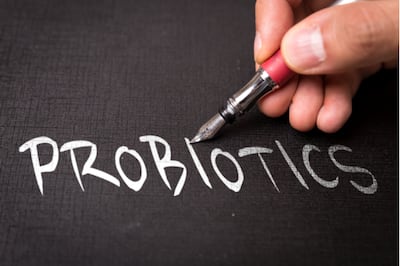Popular food supplement ingredients including melatonin and curcumin have been recommended for a safety assessment which could lead to their use being restricted or banned outright across the EU.
A working group of the heads of European food safety agencies (HoA) has drawn up a list of 13 substances – other than vitamins and minerals – with a nutritional or physiological effect added to supplements which it says should be prioritized by the European Commission for a review under Article 8 of Regulation (EC) No 1925/2006. Annex III of this Regulation lists substances which are known or suspected to have adverse effects on health and outlines restrictions on their use.
Substances Prioritized For Article 8
Actaea racemose, Coumarin in plant preparations, Curcumin in Curcuma spp.-preparations, Hypericum perforatum, Lepidium meyenii, Melaleuca spp.-essential oils, Melatonin, Ocimum tenuiflorum, Piperine, p-Synephrine in Citrus spp.-preparations, Tribulus terrestris, Tryptophan, and Withania somnifera.
According to the HoA working group’s report, the 13 substances – listed in sidebar – are eligible for an Article 8 procedure as they are considered to pose a risk to consumers and their intake through supplements greatly exceeds normal intake from a balanced diet.
The working group identified in total 117 substances which it says based on existing risk assessments should be prohibited or restricted in supplements.
Of these, 65 were assumed to be “novel,” with the group recommending assessment by the Commission under the Novel Foods Regulation.

As for the remaining 49 substances, the group says 13 should be prioritized by the Commission for Article 8 as they pose the greatest risk to consumers, with some exhibiting possible carcinogenic, mutagenic or reprotoxic properties.
With manufacturers now facing a nervous wait to see how the Commission responds to the working group's recommendations, market expert Jérôme Le Bloch tells HBW Insight that the HoA report represents the latest move by the regulatory authorities to increase their oversight of Europe’s supplements industry.
Le Bloch – who is head of scientific affairs at consultancy FoodChain ID – takes issue with many aspects of the report, questioning the working group’s motivations and methods in drawing up the unsafe substances list.
He also offers his advice to those companies marketing supplements containing substances listed in the report and suggests where industry needs to improve when it comes to assessing the safety of the ingredients in their products.
How do you assess the composition of the list of 13 substances recommended for Article 8 review, and was the inclusion of any a particular surprise?
The recommended list for Article 8 review is highly problematic, since it includes some of the most widely used ingredients in supplements. We can cite Actaea racemosa, curcumin, Withania somnifera, Lepidium meyenii (Maca), or melatonin which are widely consumed. Despite some adverse effects reported in preclinical studies, there is a large history of safe use worldwide. We may have other botanicals or substances with higher safety concerns. However, the list reflects the huge consumption of these substances, with of course more reports of side effects through the nutrivigilance systems due to this large consumption.
Do you think the HoA working group has reasonable justification for including these 13 substances in particular in the list?
The process used by HoA is pertinent for me, as they initially start with the DACH list* (Germany, Austria, Switzerland), and then they used the existing safety evaluations. They withdrew all novel foods from the list, and focused on 42 substances/ingredients present on the market, for which no Article 8 review was ongoing or existing.
However, this process is biased, as:
1) The safety evaluation is performed by national competent authorities, but does not include up-to-date scientific data. Some reports were published more than 10 years go, and even 20 years ago for one report on Griffonia simplicifolia. The decision is based therefore on part of the available data.
2) The reading of the HoA report clearly shows that the initial idea was to request Article 8 review for these substances, before assessing their safety.
The justification presented for each substance – in Annex C of the report – is questionable for some ingredients, but there are not enough details in the document. As the HoA position is based on the work performed by national authorities, we need to evaluate each single report.
*Editor’s note: The DACH list was established by Germany, Austria, and Switzerland with the objective to provide all parties involved in the trade of goods with a decision guidance for the assessment of substances regarding their use as food or food ingredients.
For companies currently marketing supplements containing one of the 13 substances proposed for review under Article 8, what action would you recommend they take now? Should they begin compiling safety data to submit to a future review? Should they consider reformulating products to remove the problematic substance?
To date, there is no change for these products. They can remain on the market as soon as they are compliant with EU and national regulations. We need to wait for the possible request of Article 8 for these substances, and to see what is proposed by Member States. There are three possibilities when an Article 8 procedure is requested. The ingredient can be added to Part A of Annex III of Regulation 1925/2006, i.e. prohibiting its use, or to Part B, i.e. use with restrictions (dosage and/or warnings), or to Part C, i.e. ingredient under scrutiny, leading to an EFSA evaluation, with a public consultation for 24 months, and a final decision from the European Commission within four years.
If some ingredients are added to Part A or Part B there is no possibility to provide additional data. Food business operators (FBOs) just need to follow the new requirements. If ingredients are added to Part C, FBOs can provide new data. In this case, I strongly recommend providing a full characterization of the ingredient with the safety report.
The recent EFSA opinion on the safety of plant preparations containing hydroxyanthracene derivatives (HADs) listed in Part C is a perfect example. The 14 studies evaluated showed a lack of any genotoxicity effects but were rejected due to insufficient characterization of the tested extracts. EFSA based its opinion on a single extract, in which compounds with potential safety concerns have been identified. The final decision was a risk of HADs, despite the data provided by FBOs. So, to be included in the EFSA opinion of a substance under scrutiny in Part C, a full characterization of the ingredient is mandatory.
What action should companies take if they are marketing a food supplement containing one of the remaining 104 substances (of the original 117) considered novel by the report?
This report has no impact for the moment. However, if a company is using an ingredient claimed as “assumed novel” in Annex A – a total of 65 substances – a change in the formula should be considered. For ingredients which are not novel, but not listed in the 13 substances of concern – a total of 49, 42 of which were prioritized by the HoA group – nothing can be done for the moment. Years will be needed for the next steps. The work published in the report in June was started in 2019. So, we can expect several months or years before a new list. We don’t know the next step for the HoA group, so companies do not need to focus on this for the moment, except those using one of the 13 substances at risk for Article 8 request.
The Article 8 procedure has been available since 2007, yet only a very small number of substances have been prohibited or restricted in that time. Do the findings and recommendations of the HoA working group in this report suggest we are moving towards a more tightly regulated supplements market in future?
All decisions from the authorities are leading us to the stricter control of supplements. This HoA report is one example. The wish of Member States and the European Commission to harmonize the maximum limits in vitamins and minerals is another one, as behind this harmonization there is also a reduction in the maximum limits. (Also see "EU Plan To Set Maximum Levels For Vitamins In Supplements Further Delayed" - HBW Insight, 20 October, 2023.)
EFSA opinions and evaluations are also examples of the current position of the authorities. Novel food approvals are limited, and EFSA requirements are now so high that applications need years to be authorized, after a significant investment in terms of analyzes and studies. Clearly, the regulatory changes and upcoming regulations will strongly affect the supplement market.
Do you think the food supplements industry needs to get better at collecting safety data and be more proactive in sharing that with regulators?
There is a clear need on two points for the industry: one, better characterize the ingredient and two, have a better safety evaluation. Regarding the first point, it is not possible today to have an extract standardized to 10-20% in a compound, without knowing the remaining 80-90%. In the case of an EFSA evaluation, characterization should be performed at 100%.
For the second point, FBOs have to better evaluate safety, with OECD and Good Laboratory Practice-compliant studies. There are too many ingredients without pertinent safety substantiation on the market. The nutrivigilance systems will also be useful for the assessment of side effects in real-life conditions, even if the link between a side effect and the consumption of a supplement is always difficult to confirm.
I strongly recommend FBOs provide data and studies to EFSA when given the opportunity through public consultations. If these analyzes and studies are pertinent, this can affect positively the authorities’ evaluation. Of course, if there is no request from the authorities, it’s useless to provide data.




